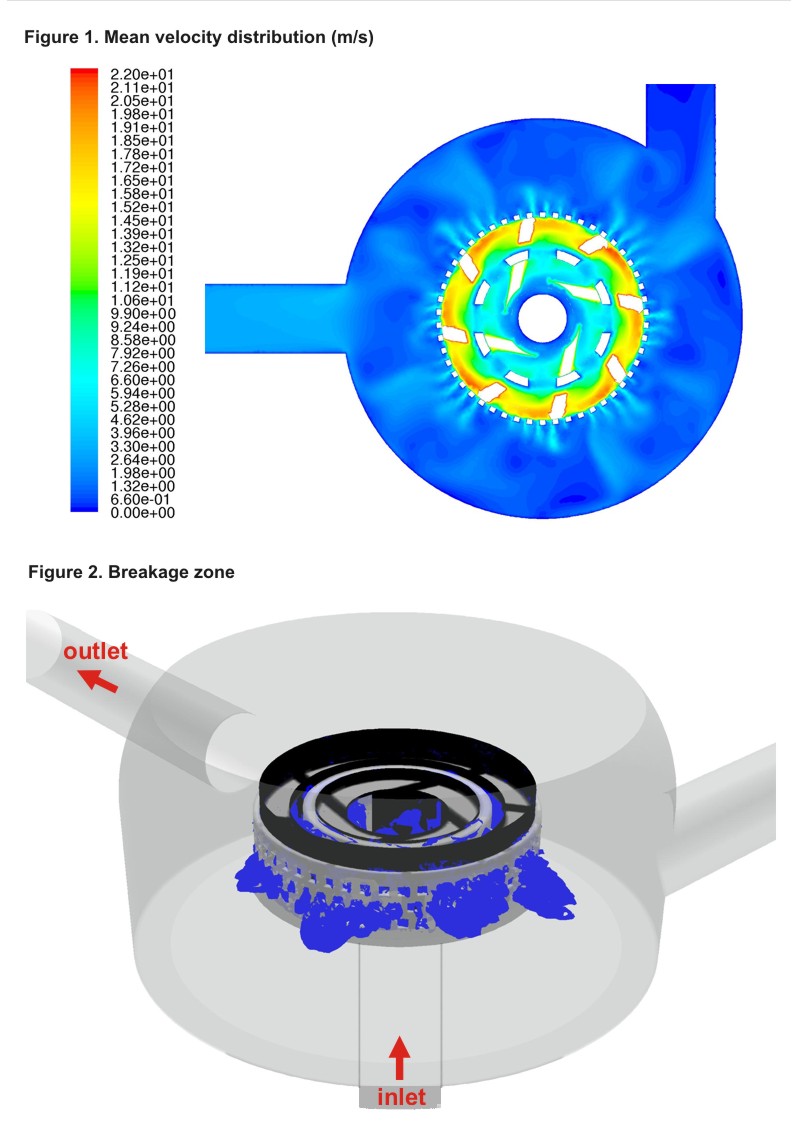249e Break up of Nanoparticle Clusters Using an in-Line Rotor-Stator- Validated Cfd Result
Modeling of agglomerate dispersion is not trivial because the effective viscosity of aggregated suspensions depends significantly on concentration and size of primary particles, structure of aggregates, details of the flow and non-uniformity of particle distribution in the flow device, with strong non-linear coupling between suspension structure and the flow. Numerical simulations of such processes require long computation time because the flow is three-dimensional and time-dependent.
In this work, a complex model of suspension rheology based on its structure, and employing the quadrature method of moments (QMOM) population balance modeling, is formulated for aggregates consisting of primary nano-particles. Modeling is based on application of aggregate structure models, fractal dimension evolution models, mass and momentum balances (CFD is applied) coupled with population balances (with identified mechanisms and kinetics for aggregation, breakage and reconstructing of aggregates), and constitutive rheological equations.
Fractal aggregates made up of two types of elementary building blocks, being either primary particles or primary agglomerates (in the case of Aerosil 200V) are considered. The model of breakage is based on the comparison of the aggregate tensile strength with the hydrodynamic stress acting upon the aggregate in the flow. The aggregate mechanical strength depends on the forces of interaction between the particles including van der Waals attractive and electrostatic repulsive forces. Breakage kernels for laminar and turbulent flows (for aggregates larger and smaller than the Kolmogorov microscale) are considered. The aggregation kernels are modeled for laminar and turbulent flows using the classical relations for the peri - and orthokinetic regimes respectively. Reconstructing of aggregates, interpreted as a change of aggregate structure that is expressed by the aggregate fractal dimension, is modeled as a superposition of effects of shear, aggregation and breakage. Variation of the fractal dimension is treated as relaxation to the asymptotic values of the fractal dimension characterizing the three mentioned above mechanisms.
Simulations are performed with the CFD code FLUENT supplemented with UDFs for process kinetics, aggregate structure and rheology, using direct simulations for laminar flows, LES in the case when development of turbulent flow is followed in the one of high pressure device by laminarization, and k-ε model to simulate turbulent flow in the rotor-stator mixer. The particular rotor-stator considered was from Silverson, 150/250MS. The test system was water and Aerosil 200V. For numerical simulation of this "high-shear" device, the number of tetrahedral cells applied was equal to 4,100,000.
Figure 1 shows the mean velocity distribution resulting from the 3D simulation of the flow for the rotor speed equal to 5000 rpm. The direction of rotor rotation is clockwise. One can see circulation cells and jets of fluid emerging from the external stator holes. Figure 2 shows the zone of intensive aggregate breakage, whereas extent of this zone is defined by the breakage rate higher than 150 m-3s-1, predicted by the 3D simulation for the rotor speed equal to 3000 rpm.
Interpretation of results of simulations and comparison with experimental data show that the model is able to predict the course of de-aggregation and that the proposed approach can be used for modeling of suspension structure dependent non-Newtonian flows.
